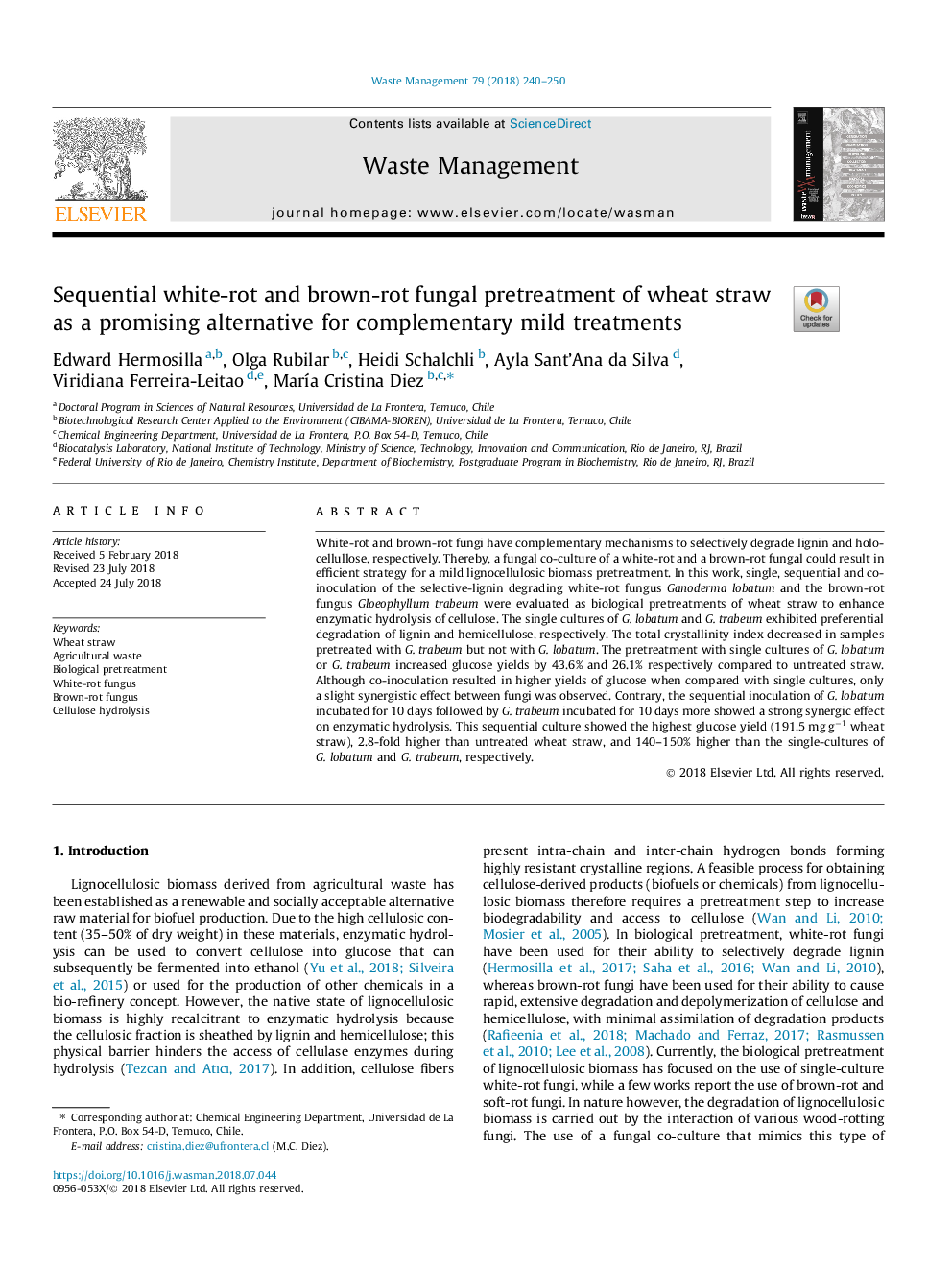| Article ID | Journal | Published Year | Pages | File Type |
|---|---|---|---|---|
| 11033297 | Waste Management | 2018 | 11 Pages |
Abstract
White-rot and brown-rot fungi have complementary mechanisms to selectively degrade lignin and holocellullose, respectively. Thereby, a fungal co-culture of a white-rot and a brown-rot fungal could result in efficient strategy for a mild lignocellulosic biomass pretreatment. In this work, single, sequential and co-inoculation of the selective-lignin degrading white-rot fungus Ganoderma lobatum and the brown-rot fungus Gloeophyllum trabeum were evaluated as biological pretreatments of wheat straw to enhance enzymatic hydrolysis of cellulose. The single cultures of G. lobatum and G. trabeum exhibited preferential degradation of lignin and hemicellulose, respectively. The total crystallinity index decreased in samples pretreated with G. trabeum but not with G. lobatum. The pretreatment with single cultures of G. lobatum or G. trabeum increased glucose yields by 43.6% and 26.1% respectively compared to untreated straw. Although co-inoculation resulted in higher yields of glucose when compared with single cultures, only a slight synergistic effect between fungi was observed. Contrary, the sequential inoculation of G. lobatum incubated for 10â¯days followed by G. trabeum incubated for 10â¯days more showed a strong synergic effect on enzymatic hydrolysis. This sequential culture showed the highest glucose yield (191.5â¯mgâ¯gâ1 wheat straw), 2.8-fold higher than untreated wheat straw, and 140-150% higher than the single-cultures of G. lobatum and G. trabeum, respectively.
Related Topics
Physical Sciences and Engineering
Earth and Planetary Sciences
Geotechnical Engineering and Engineering Geology
Authors
Edward Hermosilla, Olga Rubilar, Heidi Schalchli, Ayla Sant'Ana da Silva, Viridiana Ferreira-Leitao, MarÃa Cristina Diez,
